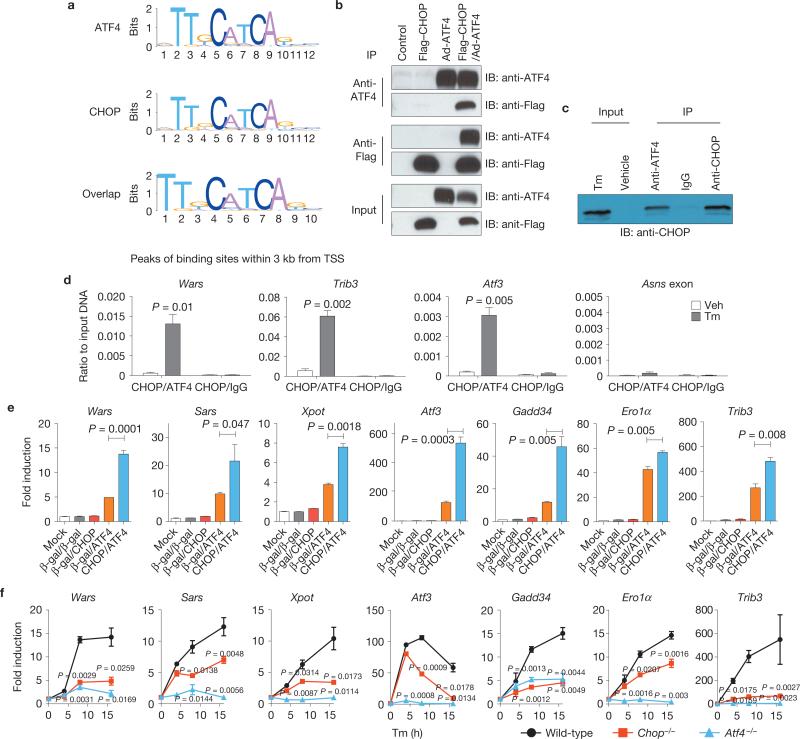Figure 3.
ATF4 and CHOP interact to induce target genes involved in protein synthesis and the UPR. (a) Motif analysis of ATF4- and CHOP-binding sites. Sequences from CHOP- and ATF4-binding regions <3 kb upstream and downstream of a TSS were analysed. Significantly over-represented motifs from each gene set are shown. (b, c) Interaction of ATF4 and CHOP. (b) Flag–CHOP and ATF4 were expressed either alone or together in HEK293 cells and immunoprecipitated (IP) using anti-Flag or anti-ATF4 antibodies. Immunoprecipitated proteins were analysed by western blotting (IB) using ATF4 or Flag antibody. (c) MEFs were treated with Tm (2 mg ml–1) and immunoprecipitated using anti-ATF4, normal rabbit IgG or anti-CHOP. Immunoprecipitated proteins were analysed by western blotting using anti-CHOP antibody. (d) Co-occupancy of ATF4 and CHOP in the promoter regions of commonly targeted genes. Cells were treated with Tm for 10 h, followed by sequential ChIP assay (see Methods). The enrichment was determined for re-ChIPed chromatin by qPCR (n = 3 independent experiments). (e) Effect of ATF4 and/or CHOP overexpression on common target genes. ATF4 and CHOP were overexpressed either alone or together in WT MEFs. Gene expression was measured by qRT–PCR using β-gal as a negative control. Data are presented as means±s.e.m. (n = 3 independent experiments). (f) Expression profile of common target genes during Tm treatment. WT, Chop–/– and Atf4–/– MEFs were treated with Tm (2 μg ml–1) for 16 h and total RNAs were prepared at indicated time points for qRT–PCR (n = 3 independent experiments). All error bars represent means±s.e.m. Uncropped images of blots are shown in Supplementary Fig. S7.

